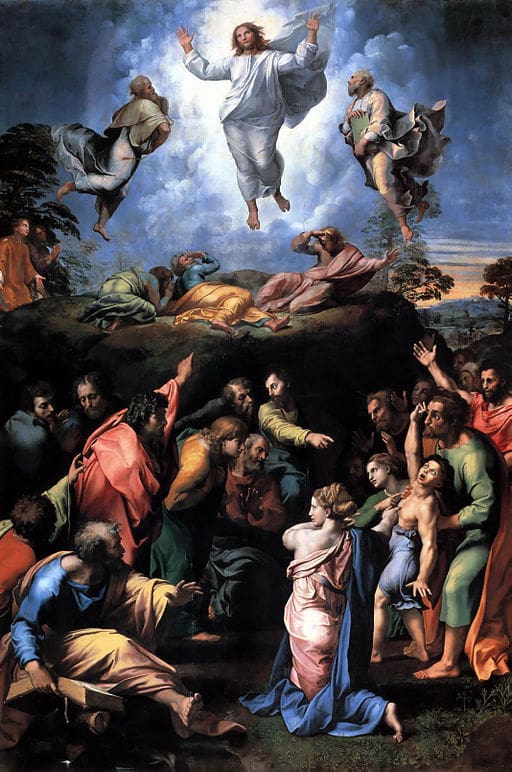Editor’s note: David Torkington’s Mini-series on prayer continues; to read part 26 click here and to begin with part one, click here.
The great Franciscan theologian Blessed John Duns Scotus said that when God conceived his plan to share his life of ecstatic bliss with us, he simultaneously conceived the means by which that plan could be put into operation. He said that “If God wills an end, he must will the means.” That is why he became flesh and blood in the person of his son Jesus Christ and why he had to have an immaculate Mother so that no imperfection from her nature or nurture could prevent him becoming Christ the perfect King. That was the first stage of his plan.
The second stage was brought about by Jesus who in the fullness of his manhood, explained in far more detail the meaning and purpose of God’s plan, and how in future it would not be just for the Jews, but for all mankind.
The final stage of implementing that plan could only begin after Jesus returned to God. It was only after this that his human nature could, not only be transformed and transfigured, but become the means of transmitting the love they had seen radiating out of him, onto, and into them, and then the other Apostles on the first Pentecost day.

Flames of Fire
The Holy Spirit, symbolized by flames of fire above each of them in the Upper Room, not only entered into them but then drew them into the transformed and transfigured Christ who would receive them and all who would follow them into his new mystical body. His body now glorified was no longer limited by the laws of space and time, as his physical body had been. So, like God himself in whom he now existed, he could be approached by anyone, at any time and in any century to the end of time.
Once purified, our loving and Christ’s loving can mix and merge as one, then we can contemplate the Father, in, with and through him beginning now in this world but continuing as our final destiny to all eternity.
If this is not good news, what is?
It was, however, not just good news for them but for everyone. That is why they lost no time in rushing out to tell this to the crowds outside – the best news that mankind could ever receive. They and all who would come after them were being called to union with the all holy and utterly Other, the God who chose to share his life with us, beginning here on earth and to all eternity in heaven.
Drunk with the love of God.
When they rushed outside they were so full of the love they received that people thought they were drunk. In a sense they were, but it was not the drunkenness that comes from filling themselves with wine, but from being filled with the love of God. Filled with enthusiasm to receive the same sort of wine that filled the Apostles, the crowds asked what they should do. They were encouraged to receive baptism, then spend their whole lives turning to receive the love of God that Jesus was continually pouring out upon them. This love enabled them to be drawn up continually, not just into their Risen Lord’s mystical body, but into his endless contemplation of his Father. His contemplation did not just mean gazing upon the glory of God, but being simultaneously drawn into that glory to be united with the God he called Father and to experience the Holy Spirit who was the love that bound them together. He then becomes the means of transmitting the love of God to every human being who is prepared to receive it.
In this sense, contemplation is not so much a means to an end, but the completion of the profound primeval desire to love and to be loved that enthralls all of us from the very beginning of our existence.
Contemplation learned at the mother’s breast
St. Bonaventure once said that contemplation is first learned at the mother’s breast. It is here that we receive the love of our mother that gives us the security to go out of ourselves to first gaze upon beauty, truth, and goodness which is how we first meet the love of God in his creation. When a poet is transported with delight at the sight of ‘a host of golden daffodils’ his joy is that of one who first meets God in the beauty of his creation. This form of natural mystical experience is one with which we can all identify, for who has not met God’s beauty shining through his creation as we stand and stare at the beauty of a ravishing land or seascape or at the transcendent grandeur of the mountains towering above them?
In order to experience the love of God more directly, albeit from an almost infinite distance, mystical writers like St. John of the Cross insist that a purification must take place first or the ‘demons’ within us will so occupy our attention that it will be impossible to gaze upon the love of God.
But when we have been sufficiently purified, to begin with, the experience that we have is not dissimilar from those natural mystical experiences that we may have had in the past. In the past those experiences were sudden and unexpected and usually of very brief duration, and quite unpredictable. However the experience that we have of God in mystical contemplation, after a certain initial purification, can be predictable when we go to prayer, for a time at least, and it lasts longer and can rise to ever-increasing degrees of intensity dwarfing what we experienced of God through the beauty of his creation.
From natural to supernatural contemplation
For St. Teresa of Avila, the first stage of mystical prayer is what she calls Prayer of Quiet. It is indeed a quiet and peaceful gaze upon the love of God as it first begins to make itself felt in the mind or in the ‘apex mentis’ as some mystical writers would express it. However, there are different degrees of intensity; the inner peacefulness is not always of the same strength.
Sometimes there is a lifting sensation in the head when Prayer of Quiet rises to reach its peak. It is most particularly at this point that the analogy of ‘sober inebriation’ is used. This is probably how the Apostles felt as they rushed out to tell the world what was happening on the first Pentecost. No doubt that is why they were accused of being drunk at only nine o’clock in the morning. When the first Christians used the expression ‘sober inebriation’, or to quote St Augustine, ‘sober drunkenness’, they were trying to say that it is similar to the feeling that you have when you have had one or two too many, but without the side effects – the foolish behaviour, the giddiness, the lack of balance and the hangover the following day.
In truth, you have never felt better in your life and that is hardly surprising because you are beginning to experience what you were created for in the first place, and for what you have been craving for years without realizing it.
From Quiet to Full Union.
What St. Teresa calls Full Union is essentially the same experience as that felt in the Prayer of Quiet, except that the lifting feeling that sometimes accompanies it suddenly spirals up and up inside the head. This feeling is combined with a suddenness and intensity that makes a person feel they will be rendered unconscious if it does not stop, which it mercifully does before what is feared takes place. It is usually of far shorter duration than the Prayer of Quiet, but it is so intense that for the first time there are no distractions whatsoever and it is virtually impossible to move from the spot.
The experience of Full Union can sometimes strike a person like a mystical dart outside of prayer, but lasting for no more than a few seconds. You might be in the garden, a line at the supermarket or waiting for a train or a plane when you are struck, and the brief feeling of giddiness in the head makes you wonder whether you should go to see your doctor or your spiritual director! It is as if Someone is saying, “You might have forgotten me but I have not forgotten you.”
These darts do not come from Cupid but from God!
What is initially feared when Full Union is lifting a person to ever higher degrees of intensity can now take place rendering a person unconscious, for a greater or lesser period of time.
St. Teresa calls this Ecstasy. This experience is not for all and is in fact usually a sign of a certain psycho-physical weakness that causes the mind to capitulate and the receiver to faint from shock.
From Ecstasy and Rapture to The Spiritual Betrothals
Rapture is the word used by St. Teresa to describe the experience of Full Union or Ecstasy when it happens with such rapidity that she can only liken it to the speed of a bullet traveling up the muzzle of a musket. The majority of people who travel along the mystic way to its completion on earth do not experience Ecstasy, for it is not an essential, let alone an indispensable, part of the journey.
The experiences that I have been describing so far have been felt in the head. However, gradually as the purification continues they begin to spill over into the body, at first briefly and intermittently in what St. Teresa calls the Spiritual Betrothals, that, as one might expect, precedes the Mystical or Spiritual Marriage. For St. John of the Cross a person is in what he calls the Dark Night or purification up to and including the Spiritual Betrothals and for the vast majority of people the night of purification continues for their lifetime on earth. Very few come to the Mystical Marriage, including very few of those who have been canonized.
But the truth is that our final destination is union with God, in, with and through Christ, when what happened to him on Mount Tabor will begin to happen to us. Then the Holy Spirit will possess us, mind and body, heart and soul; how else can we be fully united with the glorified Christ to achieve our ultimate destiny? I will speak more of the Mystical Marriage later because from it we can learn much more about the spiritual life.
Images: fresco at the Karlskirche in Vienna by Johann Michael Rottmayr, and Transfiguration by Raphael, both Wikimedia Commons.




